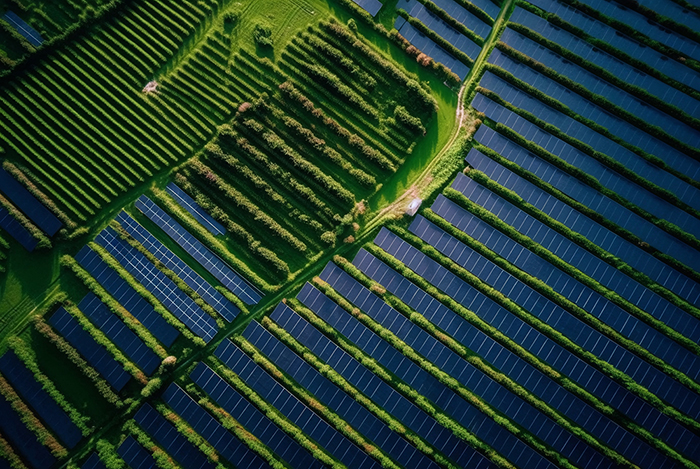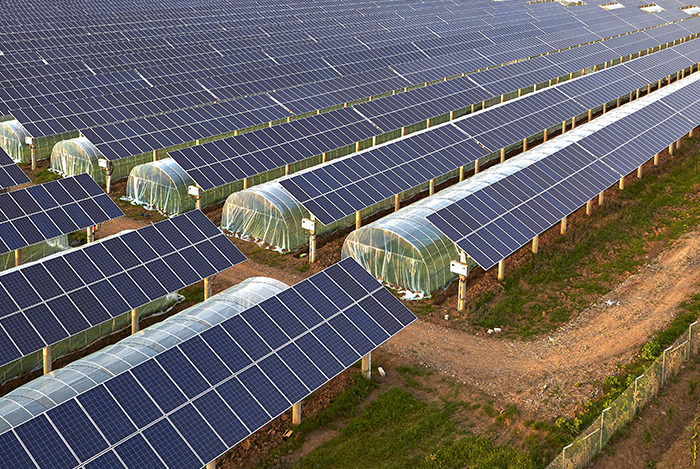As an important revenue source for agrivoltaic projects, crops must be selected based on local soil conditions and sunlight. It is also essential to consider the impact of the photovoltaic (PV) plant's operation on crop yields.
Agrivoltaics projects have gained increasing attention from policymakers and investors due to their land-saving benefits and the protection crops receive from harsh weather conditions. With national policy support, the development of such projects is accelerating. Below is a brief analysis of the construction process and key points of each stage of an agrivoltaic project.

1. Agrivoltaic Project Construction Process
Site Selection Stage: Pay attention to relevant policies. The government provides incentives and special support for agrivoltaic projects. Each province has introduced favorable policies based on its specific conditions, facilitating smooth project development. Additionally, assess whether the project can be integrated with poverty alleviation initiatives to secure more policy advantages.
Focus on Crops: Since crops are a vital income source for agrivoltaic projects, select appropriate varieties based on local soil and sunlight conditions. Also, consider how the PV plant’s operation may impact crop yields.
Project Planning Stage: Gather information on the site’s geographical conditions (climate, soil, temperature, humidity, hydrology, human and livestock activity) and the survival conditions for crops (sunlight, irrigation, pests). Plan the PV system capacity, overall layout, and long-term development while ensuring complementary benefits between agriculture and PV energy production.
Feasibility Study and Design Stage: Design the project plan, including:
Determining the greenhouse area, crop types, agricultural infrastructure, and crop growth plans (seedling, fertilization, water source, etc.) to calculate economic benefits from crops.
Analyzing the PV plant’s layout, power generation, electrical and civil engineering plans, and construction key points to calculate the economic benefits of the PV plant.
Identifying complementary advantages between agriculture and PV, addressing potential conflicts, and offering recommendations.
Preliminary Design Stage: Analyze site topography and sunlight conditions to compare different schemes for combining agricultural and PV elements. Finalize the layout, spacing, requirements, greenhouse design, PV modules, and equipment solutions.
Construction Drawing Design Stage: Based on the preliminary design and detailed survey data, along with the owner's confirmed bidding equipment, create construction drawings for the agricultural greenhouses, PV module layout, electrical systems, civil engineering, roads, and wiring. Submit the finalized construction drawings for on-site implementation.

2. Key Points in Agrivoltaic Project Design
1).Fully account for the impact of the PV plant on crops to avoid negative effects on crop sales.
2). Conduct on-site surveys to understand local climate and crop growth conditions.
3). Engage agricultural experts for professional analysis and to determine suitable crop types.
4). Prioritize crop sales channels to prevent issues where crops are grown but not sold.
5). Consider the potential adverse effects of crops on PV structures and equipment, such as corrosion on steel structures or the impact of high humidity inside greenhouses on PV modules, junction boxes, cables, trays, and combiner boxes.
6). The design of the PV module tilt angle should balance factors such as steel usage in the greenhouses, internal temperature and humidity, and power generation efficiency, with final decisions made based on technical and economic comparisons.
7). Ensure full integration of agricultural and PV infrastructure to avoid secondary construction and additional project costs.







